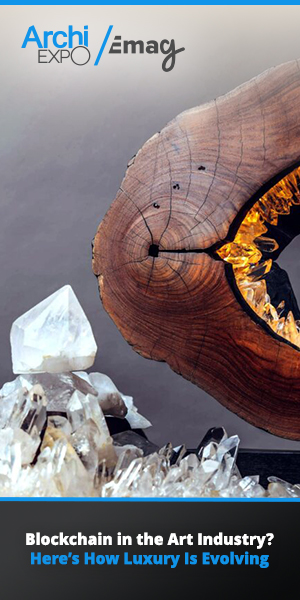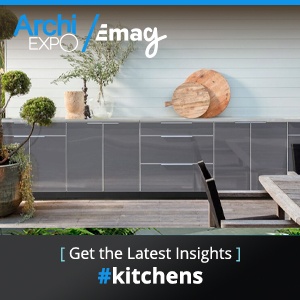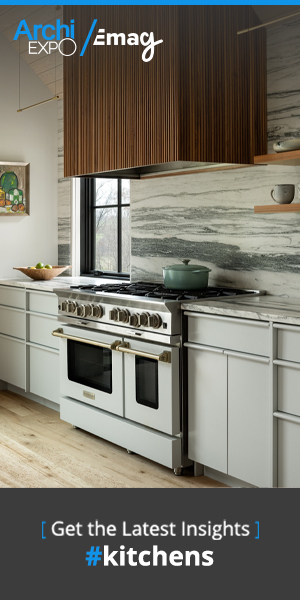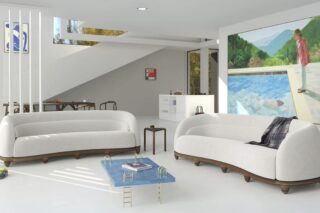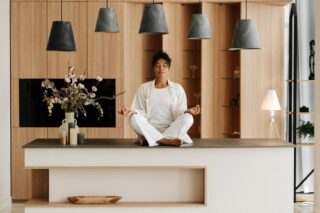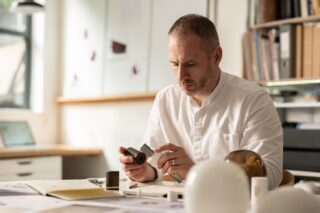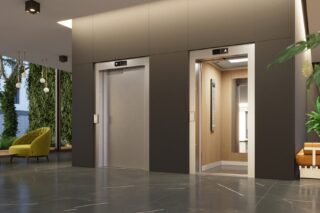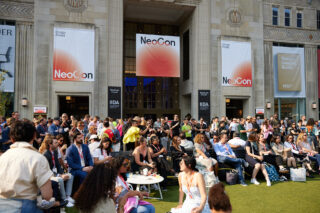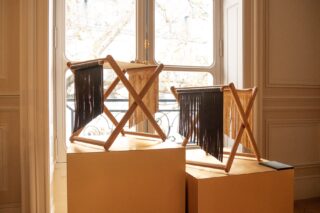Grymsdyke Farm founder Dr. Guan Lee shares his inspiration behind the revolutionary research facility, curatorial approach, and plans in an exclusive interview with ArchiExpo e-Magazine.
Grymsdyke Farm is a collective research facility, fabrication workshop, and living-working space for architects, artists, and designers on a farm in Buckinghamshire, UK. Launched in 2004, the establishment comprises a house, an assemblage of outbuildings, a walled vegetable garden, and a small orchard. On this farm, innovators across various fields engage with their surroundings, the community, and available materials to unleash their creativity. Robots made from sausage-stuffers and 3D-printed tiles are among some of the farm’s creations.
Grymsdyke hosts an array of workshops, exhibitions, lectures, and residencies. In addition to managing the farm, Dr. Guan Lee is an architecture tutor at the Royal College of Art. In 2023, he teamed with Fels on The Farm Shop which opened on the occasion of the London Design Festival and coincided with Frieze Art Fair. Here’s what he has to say about the research facility.
READ our article highlighting installations from London Design Festival 2024.
ArchiExpo e-Magazine: What inspired Grymsdyke Farm?
Dr. Guan Lee: During my last two years at the Architectural Association, I was part of the Koshirakura Landscape Workshop led by Shin Egashira, which entails redeveloping the Koshirakura village in Japan; this village was quite barren and abandoned because of the dwindling population. In my year, we built a playground for children. That kind of communal spirit we had while working in the village stayed with me, and I enjoyed the way the studio engaged with a particular culture. I wanted that to be a part of what my practice is about.
ArchiExpo e-Magazine: Talk us through the concept of this facility.
Dr. Guan Lee: One element is the workshop where I make things and the second is the people I invite to make things with me. The third element is the space, which I was committed to building a relationship with, like Shin Egashira has with Koshirakura for over 30 years. The fourth element is the transformative process – how things evolve from solid to liquid, change in shape, and so on. So, the workshop, the people, the place, and the processes are what I was thinking about while creating this farm in the beginning.


ArchiExpo e-Magazine: How has the farm’s unique approach influenced its projects?
Dr. Guan Lee: When I first started working at Grymsdyke Farm, I was interested in the process of casting. While working on casting various materials, I discovered the clay that was within the ground. It wasn’t intentional, but it had such an interesting ground for research in plant-based material – working with material that’s grown from the ground and not just excavated from the ground.
If you want to work with plant-based material, you have to understand the ground, as it’s very much part of the material. People talk about renewable materials as a thing. But I don’t think of it as a thing. I think of it as a place. I think that perspective came naturally as part of what we do there.
ArchiExpo e-Magazine: What is one project or creation of Grymsdyke Farm you’re particularly proud of?
Dr. Guan Lee: In the end, Grymsdyke Farm is the project. It is the construction of all the different things that I’ve done, still will do, and am still interested in. I’m happy with the decision to go with this rather unclear idea (at that time) and stick with it.



ArchiExpo e-Magazine: What’s your curatorial approach for Grymsdyke Farm’s Reading Design installation at this year’s London Design Festival?
Dr. Guan Lee: So reading design in the old-fashioned way means studying design. But, at the same time, reading means to be able to read and see something legible in the outcome of design. In my mind, it was important to make the process of production legible in a performative way.
I teamed with like-minded designers Marco Campardo, Sarah Van Gameren of Glithero, and Attua Aparicio. We invited design students to engage with process and process-driven design in a four-week workshop. Each week, one of us designers focused on a material with a group of students. The main curatorial decision was that at the end the object speaks for itself. There was no process material being displayed; only the final outcome was.
ArchiExpo e-Magazine: How did the Reading Design project highlight the relationship between the process of making and the final product?
Dr. Guan Lee: The process was captured as a moment in the exhibits. For instance, Sarah from Glithero and her team made wall lights called “Spill Pots.” See, pots are typically tapered. She imagined that if you accidentally topple it over while there is some material inside, the material inside would spill out. So, the idea of the process is being captured authentically – that’s how fairly viscous material would spill out of pots if tipped over. Interestingly, when she turned it into lamps, it was no longer about the materials spilling out of the pots but about light spilling out of the pot. In a way, these objects become didactic and allow for the process to be readable.



ArchiExpo e-Magazine: Reflecting on last year’s Farm Shop project—a curatorial project wherein you and a group of designers engaged in a hands-on experimental experience to create homeware—how would you say Grymsdyke Farm has evolved since then?
Dr. Guan Lee: Last year, for Farm Shop, I invited a group of designers and gave them a brief on “freshness,” tying to the idea of fresh produce we have on the farm. So freshness means a new idea. If I were to do Farm Shop again, I would go back to the same group of people and ask, “Having learned what you have learned, how would you develop the product differently?” Instead of coming up with something new, I would try to build on what we have. And that’s what sometimes learning is about – building on what we’ve learned.
ArchiExpo e-Magazine: What are the main challenges you have encountered with Grymsdyke Farm?
Dr. Guan Lee: Working with limited resources is a big challenge. I learned very quickly that in order to have the freedom to do what we want to do, we will have to stay independent and not develop anything for purely commercial purposes. It’s great to be able to do interesting things, but how do you fund it? And this is all an ongoing question, year after year. How do we do this? How do we fund projects? How do we find people to fund projects?
ArchiExpo e-Magazine: What’s next for Grymsdyke Farm?
Dr. Guan Lee: We are hoping to take these two projects, the Farm Shop and Reading Design, as prototypes to help Grymsdyke Farm become sustainable – not just in terms of materials and production, but also in terms of funding and people’s ideas. I want to continue to operate the way we do, consolidate more ideas, and make sure that they can be developed further.

